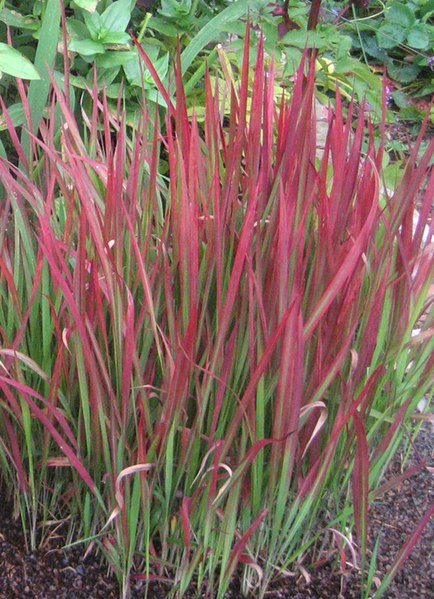Ornamental grass species offer distinctive foliage and varying textures to blend and contrast with the more standard flowering perennials.
There are two types of grasses: warm-season & cool-season. The warm-season grasses are mainly deciduous, growing from spring through summer, blooming in fall, & going dormant in winter. Cool -season grasses are usually evergreen & start their growth in fall, flowering in spring and summer. Both types have their flower clusters atop slender stems which bend & flow in the wind making them an interesting feature in the garden.
Ornamental grasses also have two growth habits: running & clumping. Running grasses multiply by spreading stolons or rhizomes, and can be invasive. The clumping type is not invasive.
There are ornamental grasses for all light conditions & soil types, and many work as container plants.
Early spring is the best time to plant & divide, & cut back & tidy up clumps of dead leaves & flowering stems from the previous year. When planting the grasses, work organic matter, compost, and a complete fertilizer into the soil, & plant the crown above the soil line to encourage drainage & prevent rot.

Carex buchananii – Leatherleaf Sedge – ‘Red Rooster’
Light -full sun to part shade
Height – 18″ – 24″
Bloom – insignificant
Care – thrives in moist, rich soil
Featured uses – cool-season grass; narrow copper-bronze foliage; maintains color all year; upright-clumping form; ideal for containers
Other notes – Carex or Sedges are not true grasses, but their appearance is grass like.
Helictotrichon sempervirens – Blue Oat Grass
Light – full sun
Height – 2′ – 3′
Bloom – May – July; tan to cream flower spiked bloom on arching stems
Care – needs very well drained soil; feed in early spring with all purpose
fertilizer; comb out old growth Featured uses – cool-season grass; accent, borders, mass planting; semi evergreen perennial; stiff, clumping blue/gray to blue/green foliage
Imperata cylindrical – Japanese Blood Grass – ‘Rubra’
Light – sun or shade, but color is more intense if full sun or where
sunlight can shine through foliage
Height – 12″ – 24″
Bloom – none
Care – good soil & moderate watering
Featured uses – warm-season grass; moderate growing; clumping;  deciduous; broadleaf foliage that is the most colorful of the grasses with the blood red color at the upper half of the blade
deciduous; broadleaf foliage that is the most colorful of the grasses with the blood red color at the upper half of the blade
Pennisetum alopecuriodes – Dwarf Fountain Grass ‘Hameln’
Light – full sun
Height – 3′
Bloom – tan foxtail like flower plumes on slender stems rise above foliage from late summer into autumn
Care – average to good soil & regular watering Featured uses – warm-season grass; clumps of broadly arching foliage
Pennisetum setaceum – Fountain Grass – ‘Rubrum’
Light – full sun
Height – 2′ – 5′
Bloom – long plumes of dark rose colored flowers fading to beige from July to October
Care – drought tolerant
Featured uses – warm season grass; dense clump of bronzy, purplish red
foliage.
by: Viki Ashford









 deciduous; broadleaf foliage that is the most colorful of the grasses with the blood red color at the upper half of the blade
deciduous; broadleaf foliage that is the most colorful of the grasses with the blood red color at the upper half of the blade